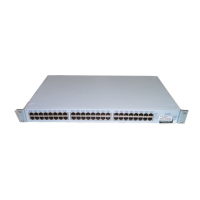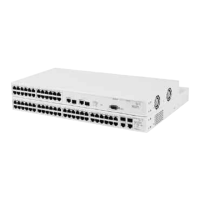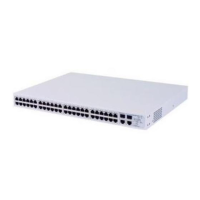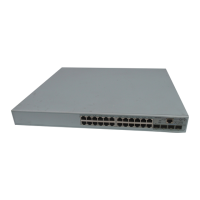IP Routing Protocols 93
Advertisement Address
The Switch uses the advertisement address to advertise routes to other
stations on the same network. Each interface that you define uses a
directed broadcast address as the advertisement address. The Switch uses
this address for sending updates.
RIP-1 Versus RIP-2
Like RIP-1, RIP-2 allows the Switch to dynamically configure its own
routing table. RIP-2 is much more flexible and efficient than RIP-1,
however, because RIP-2 advertises using the multicast method, which can
advertise to a subset of the network (RIP-1 uses the broadcast method,
which advertises to the whole network). RIP-2 can do this because it
includes a subnet mask in its header.
If your Switch receives a RIP-2 packet, it puts the route into the routing
table with the subnet mask that was advertised.
Important Considerations
Note the following considerations when you implement RIP on your
Switch:
■ Use RIP-2 rather than RIP-1 if possible, because RIP-2 uses subnet
masking and the next hop field. Subnet mask advertising allows you
to use VLSM (Variable Length Subnet Mask).
■ Where possible, set RIP as follows:
■ Send Mode — RIPv2
■ Receive Mode — RIPv1OrRIPv2
In this way, the Switch keeps track of the RIP-1 and RIP-2 address
routes in its routing table and forwards the routes as well.
■ When using Spanning Tree (STP), Rapid Spanning Tree (RSTP) and
Routing Information Protocol (RIP) all Switches must communicate
with each other on the same VLAN.
User Datagram
Protocol (UDP) Helper
User Datagram Protocol (UDP) Helper allows TCP/IP applications to
forward broadcast packets from one part of the network to another. The
most common uses of UDP are:
■ Bootstrap Protocol (BOOTP)
BOOTP allows you to boot a host through the router using a logical
port. This can be done even when the host is on another part of the

